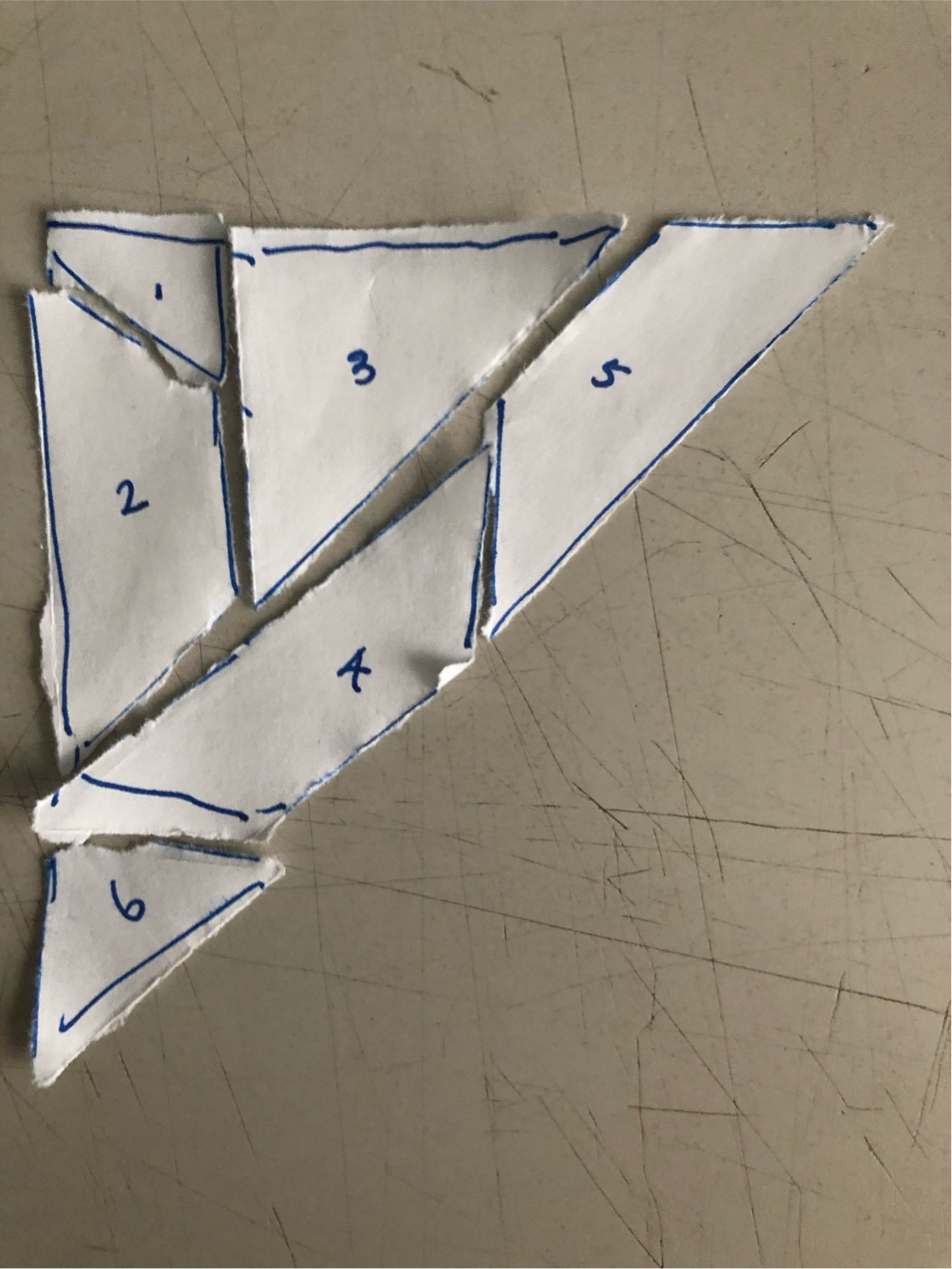In an old book (*) I found an advert with a puzzle I had never seen before.
Unfortunately the book is very rare and it is hard to make out in the scanned photocopy above. I have redrawn it:
It looks a bit like the classic Tangram puzzle, but it consists of three identical trapezoid/trapezium shapes and three triangles of different sizes.
With these pieces you have to form a square, and then transform it into a triangle by moving only two pieces.
*) The book was The Arithmachinist by Henry Goldman, from 1898. It was a self-published book promoting the mechanical calculator that he invented. A pdf file of the book can be found on this page. I have not been able to find a patent, and assume that the patent application was rejected.







